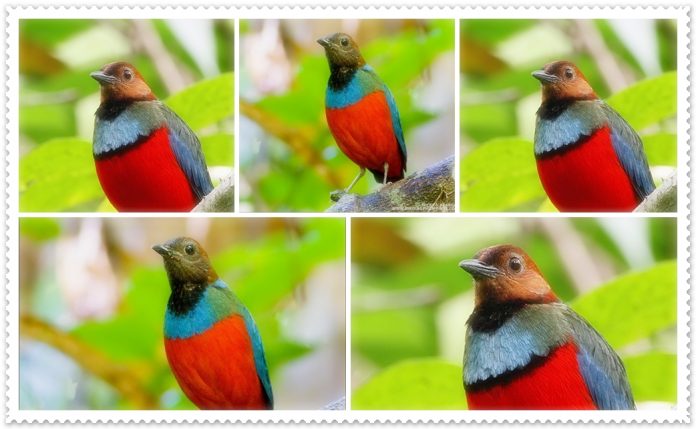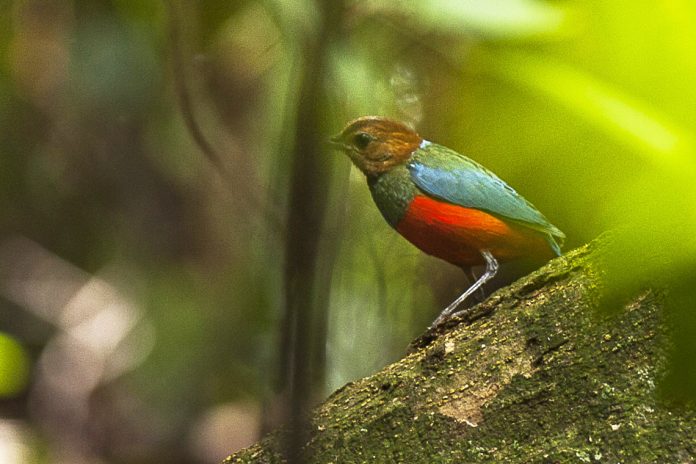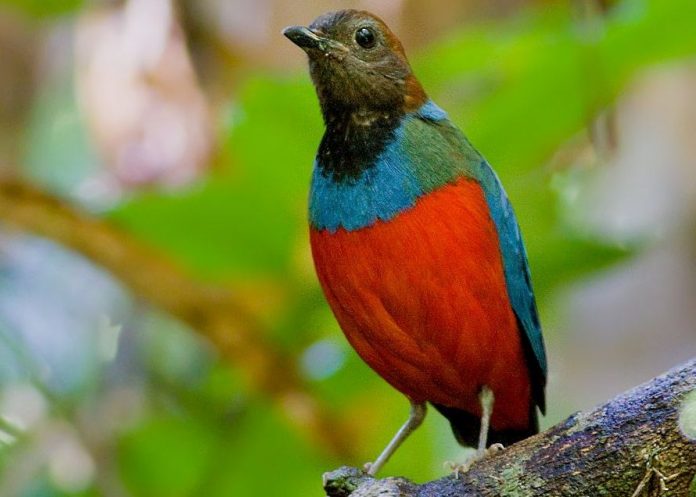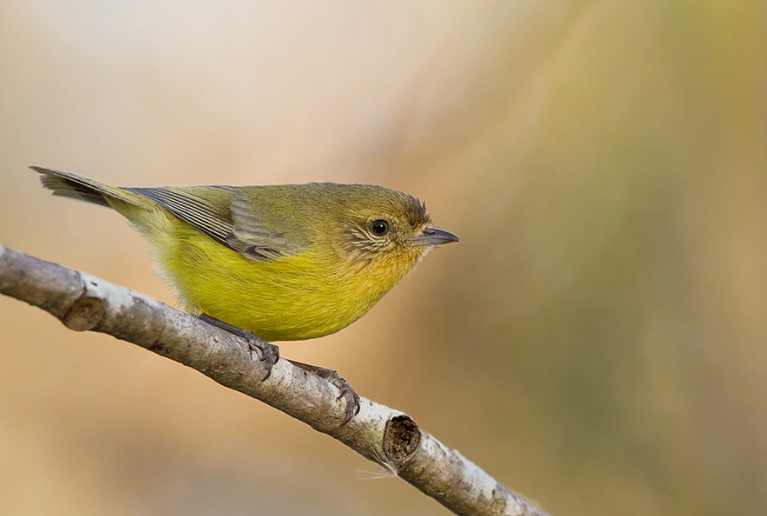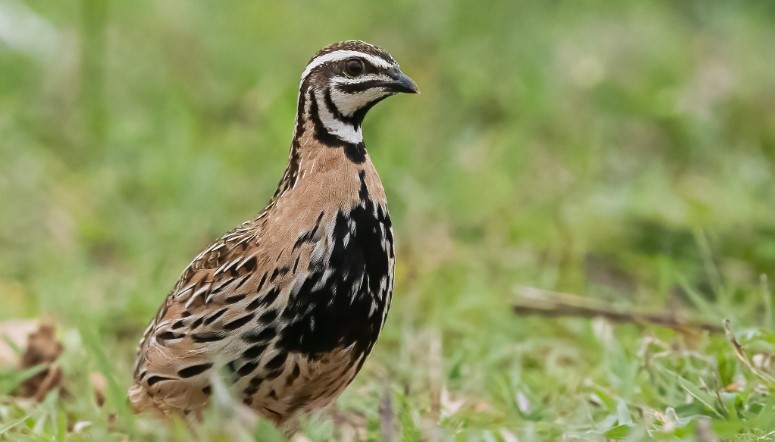The brightly colored Red-bellied Pitta (Pitta erythrogaster) breeds from October to December or January in the rainforest of the Cape York Peninsula and then migrates to southern Papua New Guinea for the dry season, from March and April.
Even though possibly flocking on migration, it disperses singly or in pairs at its breeding quarters, keeping there to the floor of the tropical rainforest and overlapping the more sedentary Noisy Pitta.
This bird usually gives from a vantage perch in a tree, as much as 25 meters above the ground. It roosts in trees at night and often calls then. When feeding, the Red-bellied Pitta hops about on the forest floor and pauses after every few hops to peck at items in the leaf litter.
It then moves its short, downward-pointing, frequently flicked tail slowly up and down, not many times. During the pauses, it may also raise its head to some extent and then quickly thrust it towards the ground. This behavior may flush small animals from the litter, which the bird then snaps up.
Like the Noisy Pitta, the Red-bellied Pitta smashes snail shells on an ‘anvil’ and most likely has a similar diet. It follows an erratic course when feeding and, from time to time, makes short, undulating flights up to about five meters between foraging areas. When flying, it more often than not keeps close to the ground but may rise a few meters higher when it passes through more open sections of the forest under-storey. Red-bellied Pitta is also known as Blue-breasted Pitta, Macklot’s Pitta.
The size of the red-bellied pitta is about 165–180 mm. Therefore, both sexes are similar, or the female is vaguely duller about the face. Also, the crown is dusky; the back of the head and nape are brick-red. Back and shoulders dull blue-green, grading to dull mid-blue rump, tail, and inner flight feathers; outer flight feathers dusky with concealed small central white bar; white shoulder spot conspicuous. Cheeks and chin are gray-brown gradings to a large black throat. Upper breast light shining blue, subtended by a narrow black breast band; lower breast to crissum scarlet. Normally, the eyes are dark brown with a black bill, and the feet are slate to bluish-gray.
However, the immature upper parts are dull olive-brown, grading to dull blue on the rump and tail. Face, throat, and breast mid-brown, shaft-blotched brownish-white; white patch in the center throat. Belly and crissum pale red Mandible ochreish. The young bird gains adult plumage gradually in the first year, losing the white throat patch last.
Apart from marked differences in color pattern, the red-bellied pitta has a distinguishing territorial call: a long-drawn, mournful whistle, the first one or two notes rising, the second one or two falling away. Moreover, the territorial call of Red-bellied Pitta is a mournful whistle of four-five notes, sometimes with rasping quality-quor-eye, quor-or, and the last doublet drawn out.
The nesting and breeding seasons are October through December or January. The bird habitually builds a nest of twigs and leaves, dome-shaped with a side entrance, lined with fibers, on the ground up to about 3 m, in tangles of vines, on a stump, or at the base of the tree. Normally, the bird lays 2 to 4 glossy, cream-colored eggs with purple-brown and blue-gray markings in a round shape at about 28 x 22 mm.
The distribution of Red-bellied Pitta is breeding summer migrants in the tropical rainforest of the Cape York Peninsula south to the Mcllwraith Range. Hence, the species is polytypic, with about 26 races ranging from the Philippines to the Bismarck Archipelago and the Cape York Peninsula. Therefore, the Australian race is distinct, characterized by pale upper parts, large white shoulder spots, and being undersized.
Read More: The Amazing Colors of Malayan Banded Pitta
